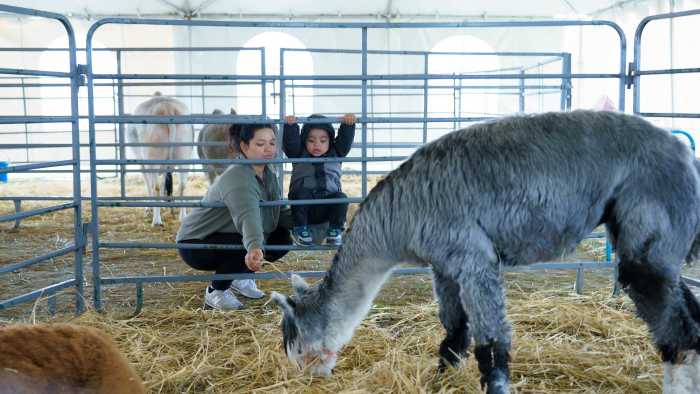
Many parents of tweens and teens are accustomed to seeing a phone attached to their kid—like an appendage. It’s so common, in fact, that it can be easy to forget that texts and emails can wreak havoc if things go unexpectedly wrong. Case in point: Sexting—the sending or sharing of sexually explicit images or content via a cellphone or other device—which is becoming increasingly common among tweens and teens. A JAMA Pediatrics report estimates that 14.8- percent of kids ages 12-17 have sent sexts while 27.4- percent have received them. And these numbers continue to rise.
For example, Julia*, a former Manhattan technology teacher, saw fallout firsthand when her (then) 17-year-old daughter, Emma, got tangled up in a digital nightmare. Emma’s boyfriend had talked Emma into sending nude photos of herself. Eventually, they broke up and Emma started dating a guy named “Eric.” When the ex-boyfriend found out and was infuriated, he proceeded to send a nude photo of Emma to all the “Erics” on Emma’s Facebook page. To complicate things further, one “Eric” was the ex-boyfriend of Emma’s older sister. He notified the family. “Your heart races 100 miles a minute and you’re terrified because this could ruin you. It could literally ruin you,” Julia says.
The Consequences of Sexting
Situations like this one are embarrassing and horrifying for everyone involved—and the ramifications can also be extreme. In many states, sharing or possessing nude or partially nude images of minors is considered child pornography and can be a felony—even if exchanges are consensual. Another danger is that these images could be picked up and distributed by strangers. Hackers and cyberbullies can cause great emotional harm (or worse) if they get access to a naked picture of a tween or teen.
Elizabeth K. Englander, Ph.D., professor of psychology and founder of Massachusetts Aggression Reduction Center at Bridgewater State University, says although these repercussions can be alarming, emphasizing the worst possible outcome isn’t helpful. “There’s a real downside to preaching consequences that are designed to be very frightening, that are very rare,” she says. To maintain credibility when educating kids, she suggests the “bad things can happen, but they don’t necessarily happen” approach.
And it seems that many teens do understand the risks of sexting. One Brooklyn high schooler explained, “It’s always done on Snapchat because it’s impossible to screenshot a picture without letting anyone know.” (Caveat: Someone can use another phone to take a picture of the image on the first phone). Teens also understand that sexting mishaps could lead to them losing certain opportunities—which happens in about 2- percent of cases, according to Dr. Englander.
In Julia’s case, her daughter is now “more cautious, more tech-savvy in understanding that if it’s out there, it’s out there forever.” Emma’s younger siblings learned from her mistake, too. As Julia puts it: “Do you want the whole world to know? Then you don’t put that on the phone because there’s always that chance.”
What to do if You Discover Your Teen is Sexting
First of all, don’t panic. “It’s really important to remember that these behaviors don’t mean your child is disturbed, depressed, or has poor self-esteem,” Dr. Englander says. “By age nineteen or twenty, about half of kids will have engaged in sexting. It’s not something that is done by a small, deeply disturbed group of kids.”
She does, however, note that sexting varies with age. “Younger kids are usually compelled by negative pressures, such as people making fun of them or threatening them if they don’t do it. For kids over 14, it’s less about pressure and more likely to involve someone they are dating, sexually active with, or someone ‘nicely’ asking for a photo.”
Talk to Your Kids About Sexting
The biggest concern, Dr. Englander says, are the circumstances that lead kids to sext. She suggests parents ask: “‘Are people pressuring you to do this? Do you feel like you’re going to get something out of this? Can you tell me what’s going on with you and this person? Who are they (maybe you know them)?’ Listen to them and make sure they understand the risks.”
Stephen Balkam, founder of Family Online Safety Institute, says “the number one step [in good digital parenting] is to talk early, talk often about how to stay safe online, including what to send, what not to send to friends, to relatives, and particularly what not to send to strangers…it’s a difficult and awkward conversation but one that has to happen.”
Kids are using smart phones at increasingly younger ages. “These incredibly powerful devices are finding their way into the hands and pockets of elementary school kids, never mind middle school, so the conversations that go with those powerful devices have to happen at an earlier and earlier age,” he says.
Balkam cautions against a cookie-cutter approach and recognizes that values vary from family to family. Conversations about safe sexting are similar to conversations about safe sex. “Only, only send an image to someone you know and that you trust. Do not show your face or any other obvious physical mark, like a tattoo…and that’s ONLY if they’re in a family that would be okay with that.”
Yaelle Yoran, LMSW, a trauma therapist and a Brooklyn mom, sees kids who would have benefited from parental talks about sexting. Many of them were wounded by the process and believed at the time that they were merely flirting by sending “cute” pictures. These kids need to understand that this isn’t a normal romantic process, she says. Sexting can, in fact, contaminate the concept of love and intimacy—which should come first in a healthy relationship. Not the other way around.
*Names and location changed for privacy
Margaret Hetherman is an Independent Journalist and Essayist. Her work can be found in Washington Post, NY Daily News, Gothamist/WNYC, Scientific American, Parents.Com, Your Teen and more. She is based in Brooklyn, NY. Follow her on Twitter: @hetherman
Wanna read more stuff like this? Get our newsletters packed with ideas, events, and information for parents in Staten Island.

Read Next | Find Great After School Programs in Staten Island







